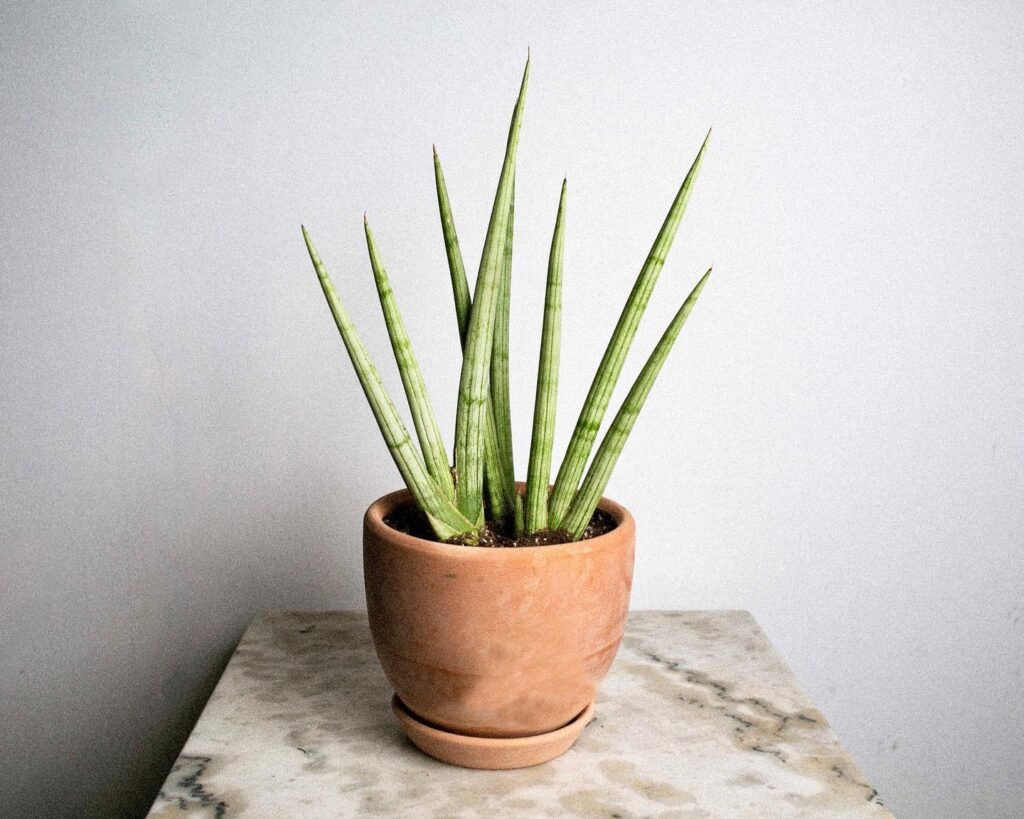Did you know that Sansevieria cylindrica, also known as Cylindrical Snake Plant, is not only a stunning addition to your indoor plant collection but also an excellent air purifier? With its sleek cylindrical foliage and air-purifying properties, this plant is a must-have for any plant enthusiast in the UK.
In this article, I will guide you through the care and maintenance of Sansevieria cylindrica, providing valuable insights on light requirements, watering tips, fertilizing, pruning, propagating, and repotting. Whether you are a beginner or an experienced plant owner, this low maintenance houseplant will bring beauty and clean air into your home or office.
Appearance of Sansevieria cylindrica (Cylindrical Snake Plant)
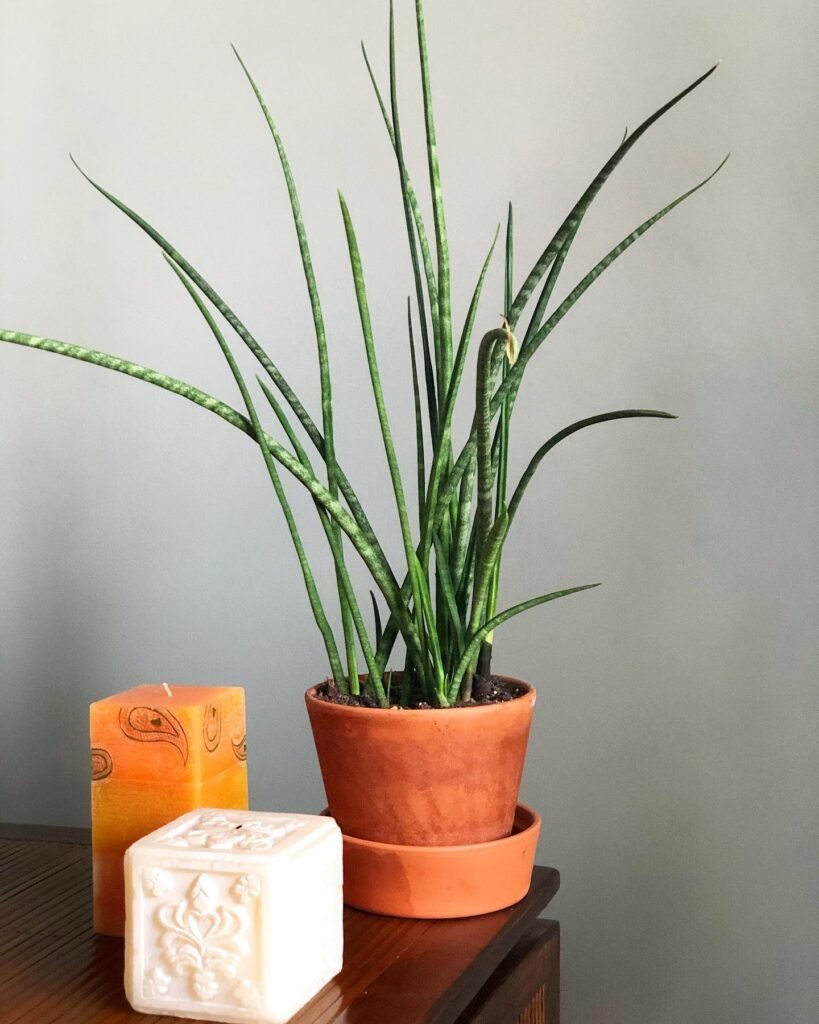
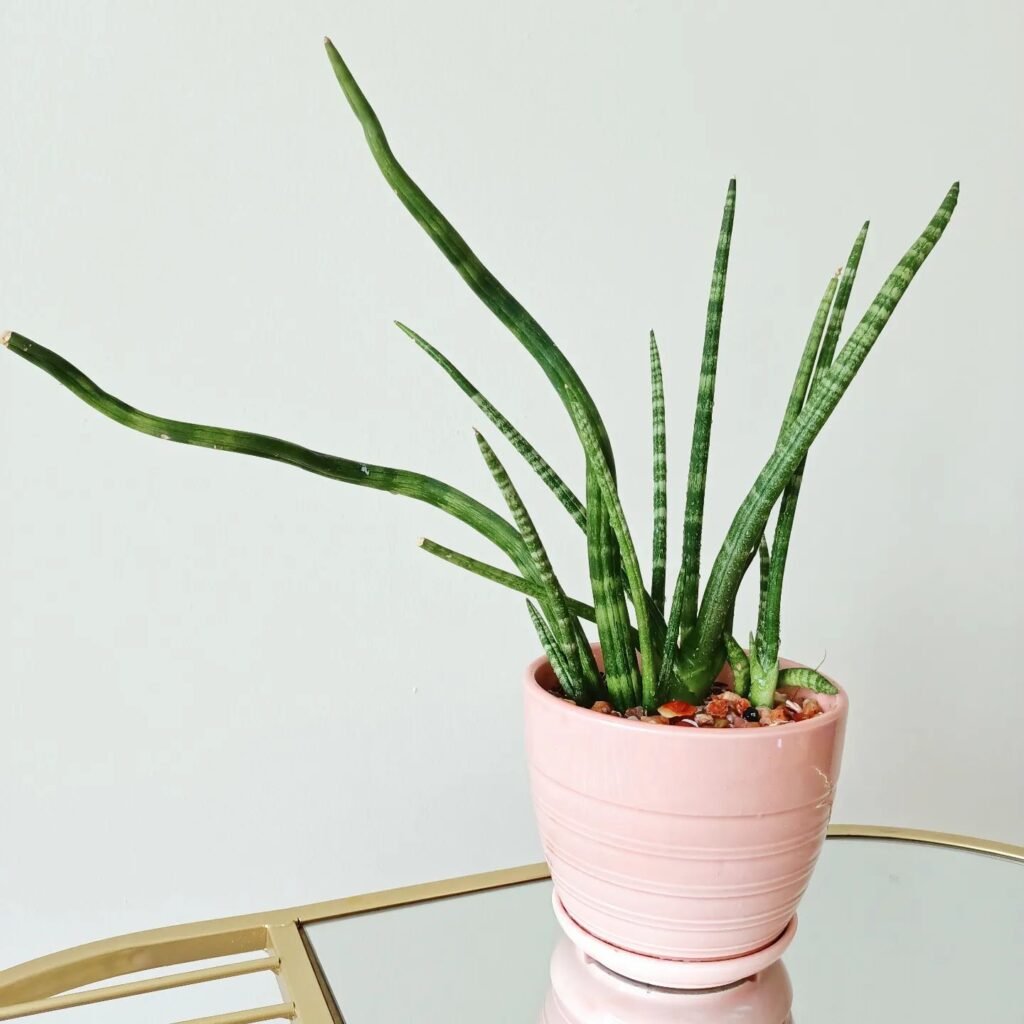
Sansevieria cylindrica, also known as cylindrical snake plant, is a visually striking indoor plant. Its distinct feature is its spear-like foliage, which grows in a cylindrical shape. The leaves are smooth, with a round cross-section, and display a mesmerizing grey-green variegation. Each leaf adds a touch of elegance and uniqueness to the overall appearance of the plant.
There are several varieties of Sansevieria cylindrica, each with its own captivating characteristics. One popular variety is the Straight cultivar, which has long, straight foliage that stands upright. Another fascinating variety is the Spikes cultivar, which features leaves that grow in a clustered formation, resembling the spikes of a cactus.
The different varieties of Sansevieria cylindrica offer diverse options for plant enthusiasts, allowing them to choose the variety that best complements their indoor space or personal style.
 Did you know the Sansevieria cylindrica, known as the “Spear of Destiny” in Africa, is believed to ward off evil spirits and attract luck? It’s commonly placed by doorways for protection and its tough leaves were once used as needles. A truly versatile and fascinating plant!
Did you know the Sansevieria cylindrica, known as the “Spear of Destiny” in Africa, is believed to ward off evil spirits and attract luck? It’s commonly placed by doorways for protection and its tough leaves were once used as needles. A truly versatile and fascinating plant!
Light Requirements for Sansevieria cylindrica
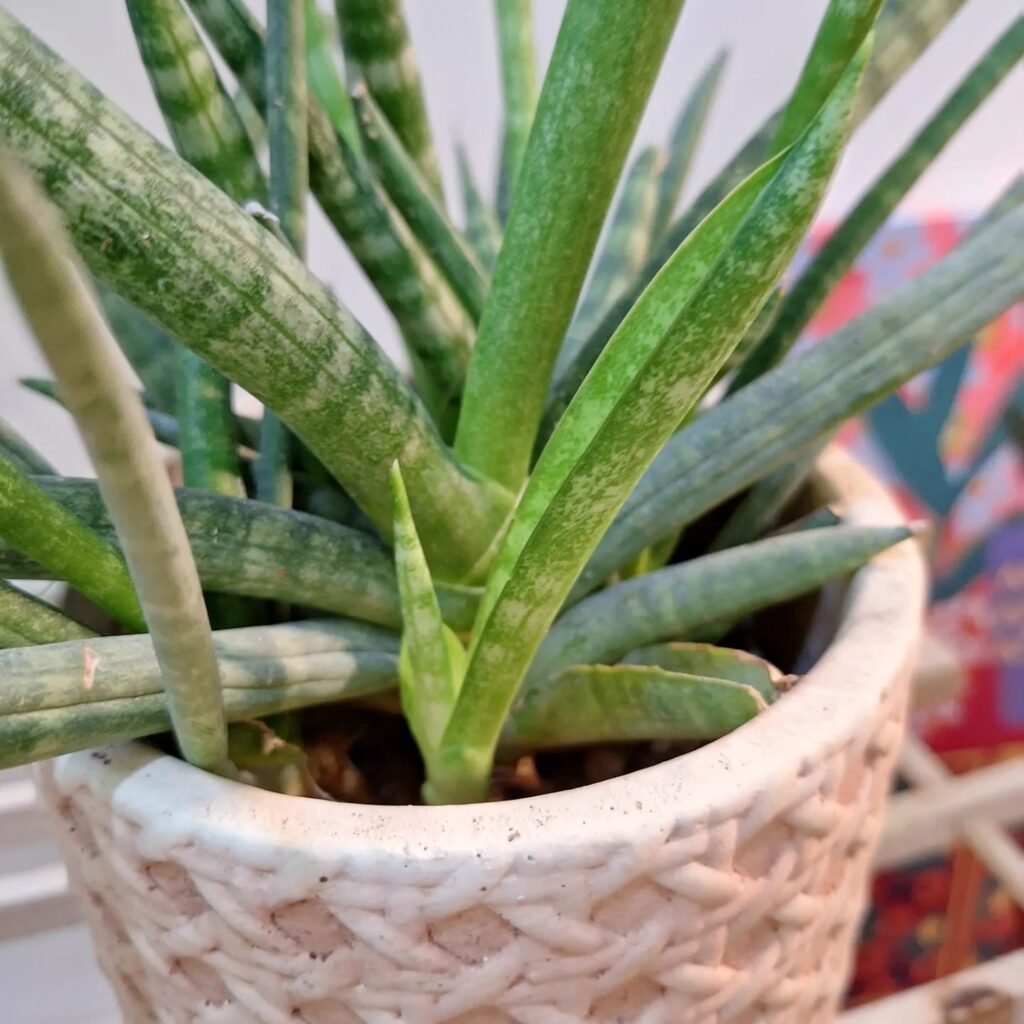

When it comes to snake plant care, providing the right amount of light is crucial for the health and growth of Sansevieria cylindrica. This popular indoor plant thrives in moderate to bright, indirect light. Placing it near a window where it can receive gentle, filtered sunlight is ideal.
Sansevieria cylindrica can also tolerate low light conditions, making it a versatile choice for various areas of your home or office. If you have a room with limited natural light, don’t worry – this plant will still thrive. Just be sure to avoid placing it in direct sunlight, as this can cause leaf burn.
Remember, the right balance of light is key to ensuring the best conditions for your Sansevieria cylindrica. So find that perfect spot near a window, where this beautiful plant can bask in the soft glow of indirect sunlight, and watch it flourish.

Watering Tips for Sansevieria cylindrica (Cylindrical Snake Plant)

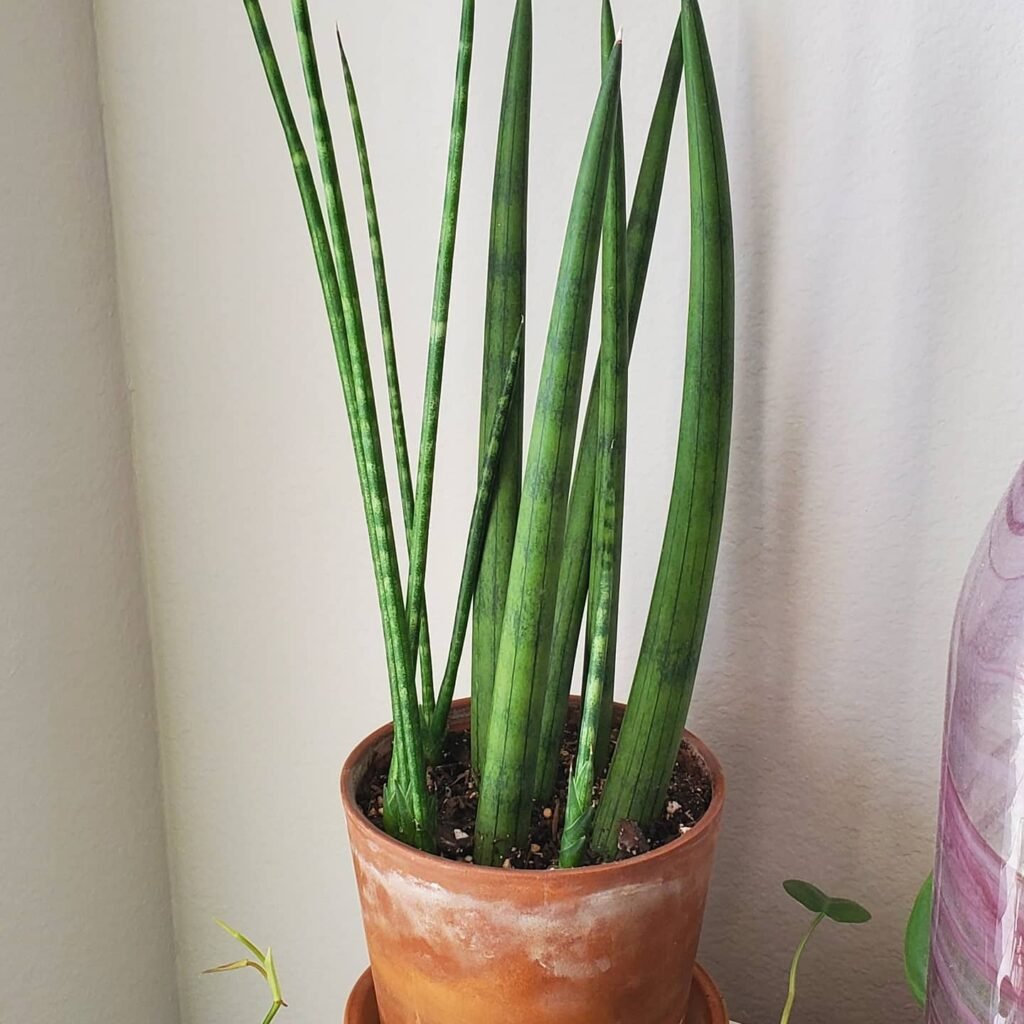
When it comes to snake plant care, proper watering is crucial for the health and well-being of your Sansevieria cylindrica. As an indoor plant, it’s important to understand the watering needs of this unique and resilient species. Here are some watering tips to keep your Sansevieria cylindrica thriving:
- Allow the soil to completely dry out: As a succulent plant, Sansevieria cylindrica has adapted to survive in arid environments. It prefers to have its roots dry out between waterings. This helps prevent overwatering and root rot, which can be detrimental to the plant’s health.
- Observe the soil moisture: Check the moisture level of the soil by inserting your finger about an inch deep into the soil. If it feels dry, it’s time to water your snake plant. If it’s still moist, wait a few more days before watering.
- Water thoroughly: When it’s time to water, give your Sansevieria cylindrica a good soak. Water the plant until the water flows out of the drainage holes of the pot. This ensures that the entire root system gets hydrated.
- Allow excess water to drain: After watering, make sure to let any excess water drain out completely. Don’t let the plant sit in a pool of water, as this can lead to root rot. Empty the saucer or tray underneath the pot to prevent water from accumulating.
- Adjust watering frequency: The frequency of watering Sansevieria cylindrica may vary depending on factors like temperature, humidity, and the size of the pot. In general, it’s better to underwater than overwater this plant. Aim to water every 2-3 weeks and adjust based on the plant’s needs.

Fertilizing and Soil for Sansevieria cylindrica

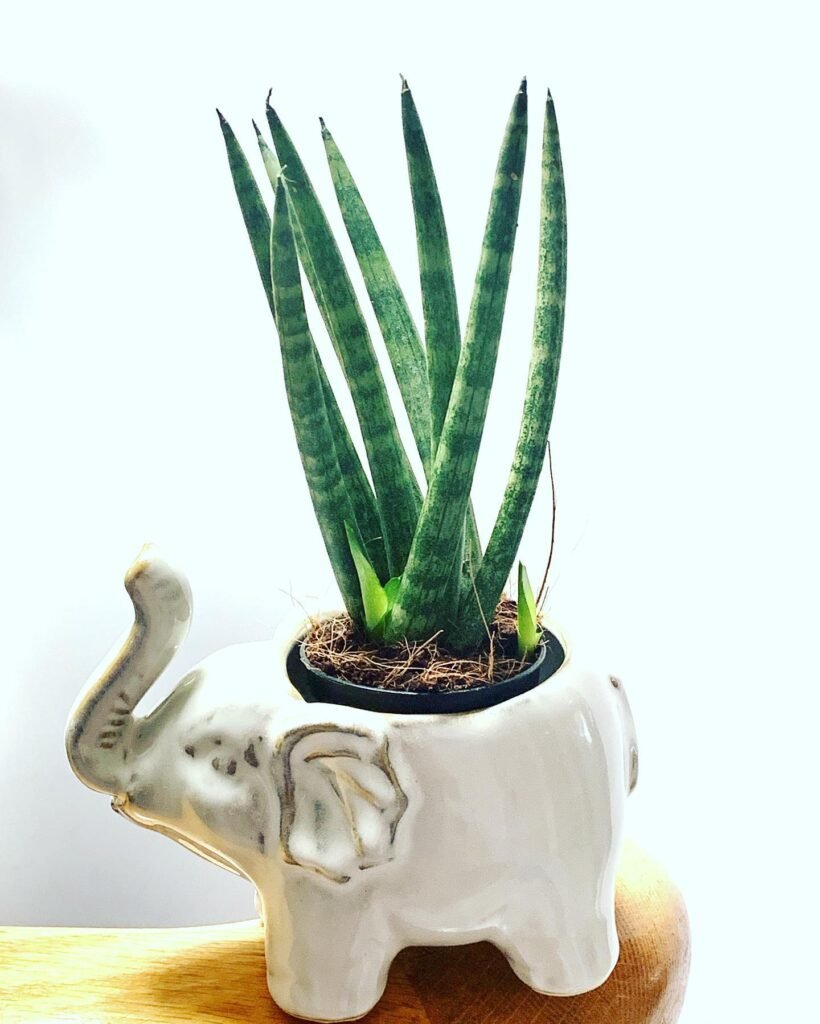
As a proud owner of a Sansevieria cylindrica plant, you’ll be pleased to know that it’s a low-maintenance beauty that doesn’t require too much attention. When it comes to fertilizing, less is more. This plant doesn’t need a lot of extra nutrients to thrive, but a small dose of cactus or general-purpose plant food once a month during the growing season can give it a little boost.
When selecting soil for your Sansevieria cylindrica, it’s important to choose a well-draining option. This will allow excess water to pass through easily and prevent the risk of root rot, which can be detrimental to your plant’s health. So, opt for a soil mix specifically designed for succulents or cacti, or create your own blend by combining regular potting soil with perlite or sand to improve drainage.
Remember, while fertilizing and soil are important aspects of Sansevieria cylindrica care, it’s essential not to overdo it. Too much fertilizer or inadequate drainage can do more harm than good. Stick to the recommended doses and ensure your plant has proper drainage to keep it happy and healthy.

Pruning and Maintenance for Cylindrical Snake Plant
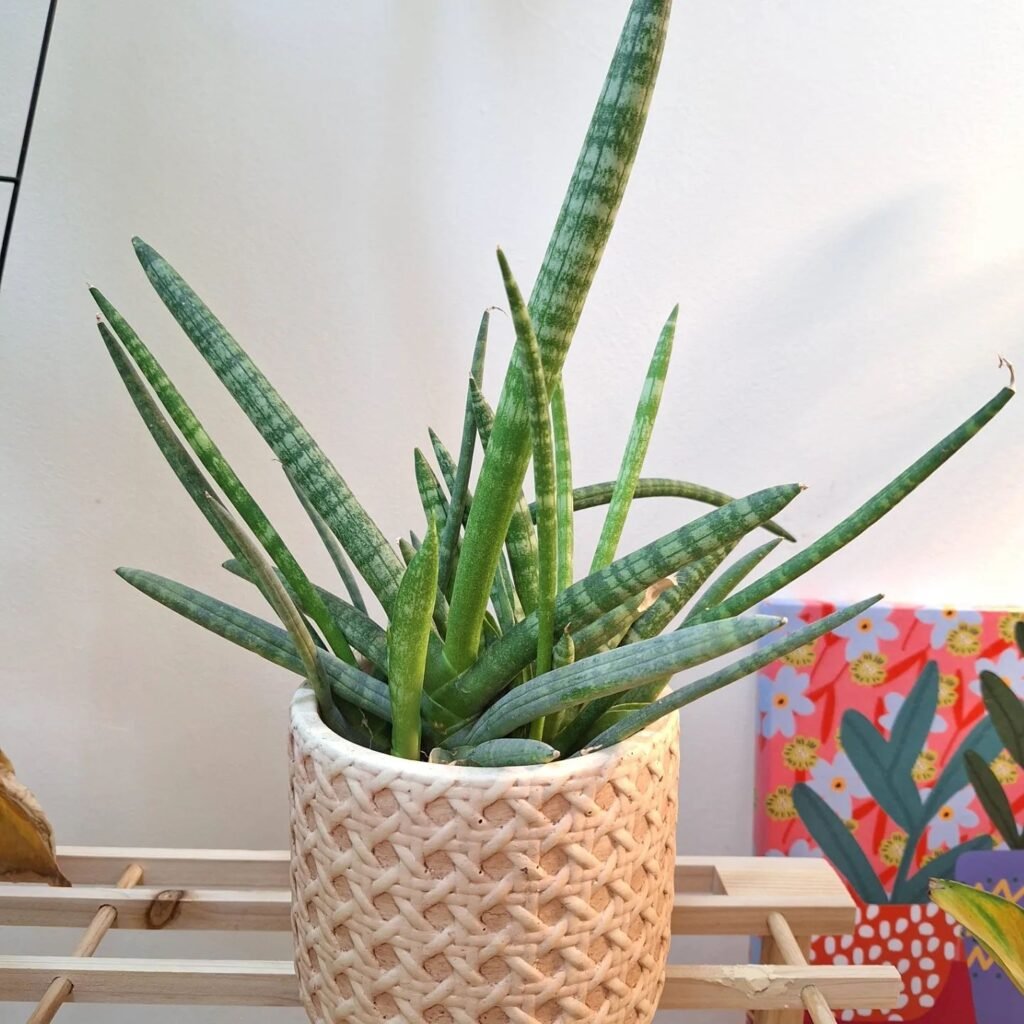
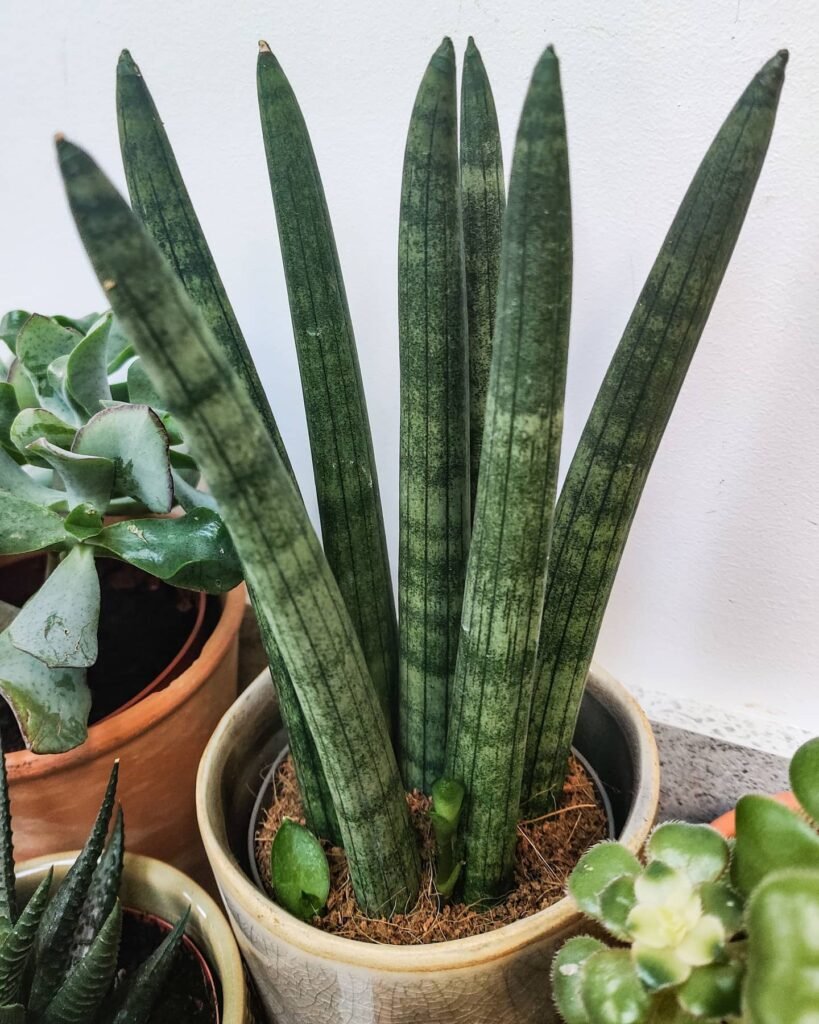
When it comes to snake plant care, pruning and maintenance are essential for keeping your Sansevieria cylindrica looking its best. Regular pruning helps remove dead or damaged leaves, allowing the plant to direct its energy towards healthy growth. Here are some tips to help you maintain your Sansevieria cylindrica:
- Prune dead or damaged leaves: Check your snake plant regularly and remove any leaves that are yellowing, brown, or wilted. Use clean pruning shears or a sharp knife to make a clean cut close to the base of the leaf.
- Wipe the leaves: Dust can accumulate on the leaves of your Sansevieria cylindrica over time, impacting its overall appearance and efficiency in photosynthesis. Gently wipe the leaves with a damp cloth to remove dust and give them a fresh, vibrant look.
- Propagate through pups: Sansevieria cylindrica produces smaller leaves, known as “pups,” at the base of the plant. These can be carefully detached and potted separately to create new plants. This process not only helps manage the size of your snake plant but also allows you to propagate and expand your collection.

Propagating Sansevieria cylindrica (Cylindrical Snake Plant)
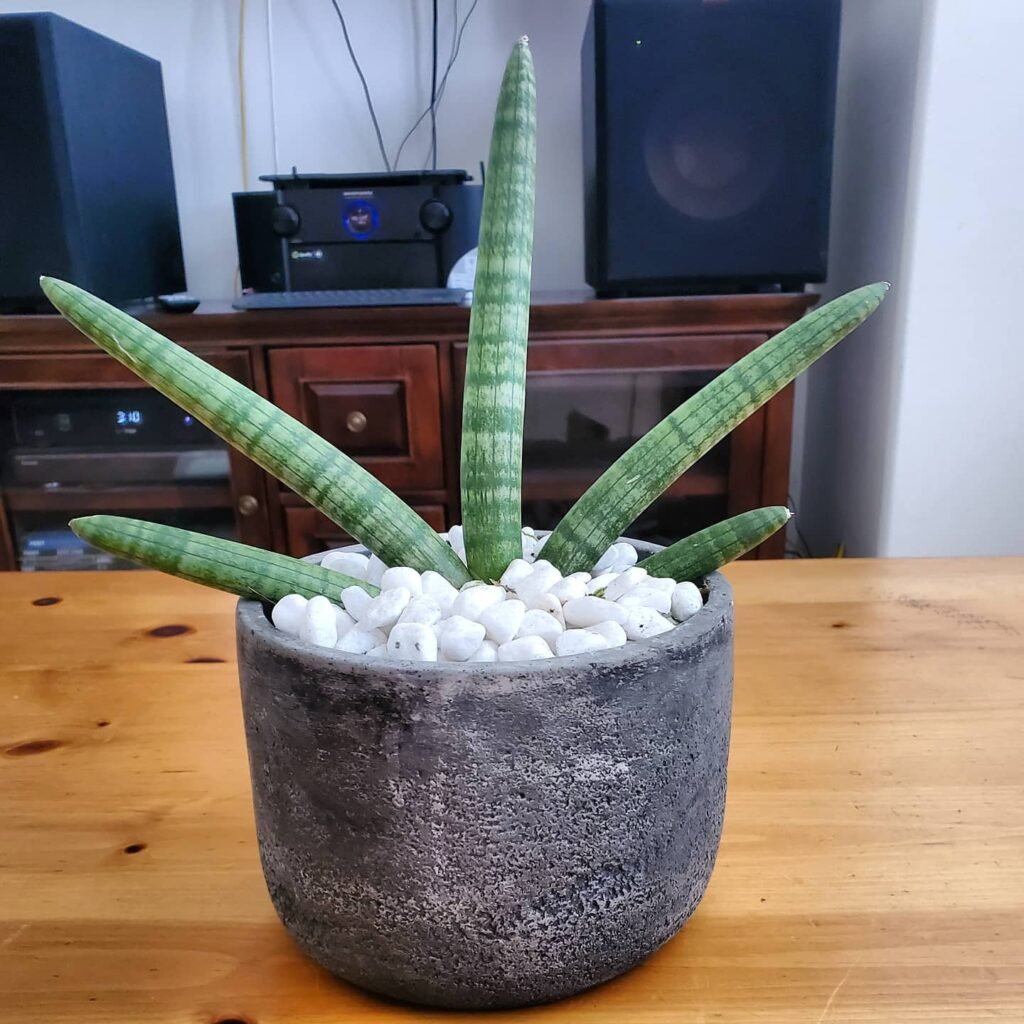
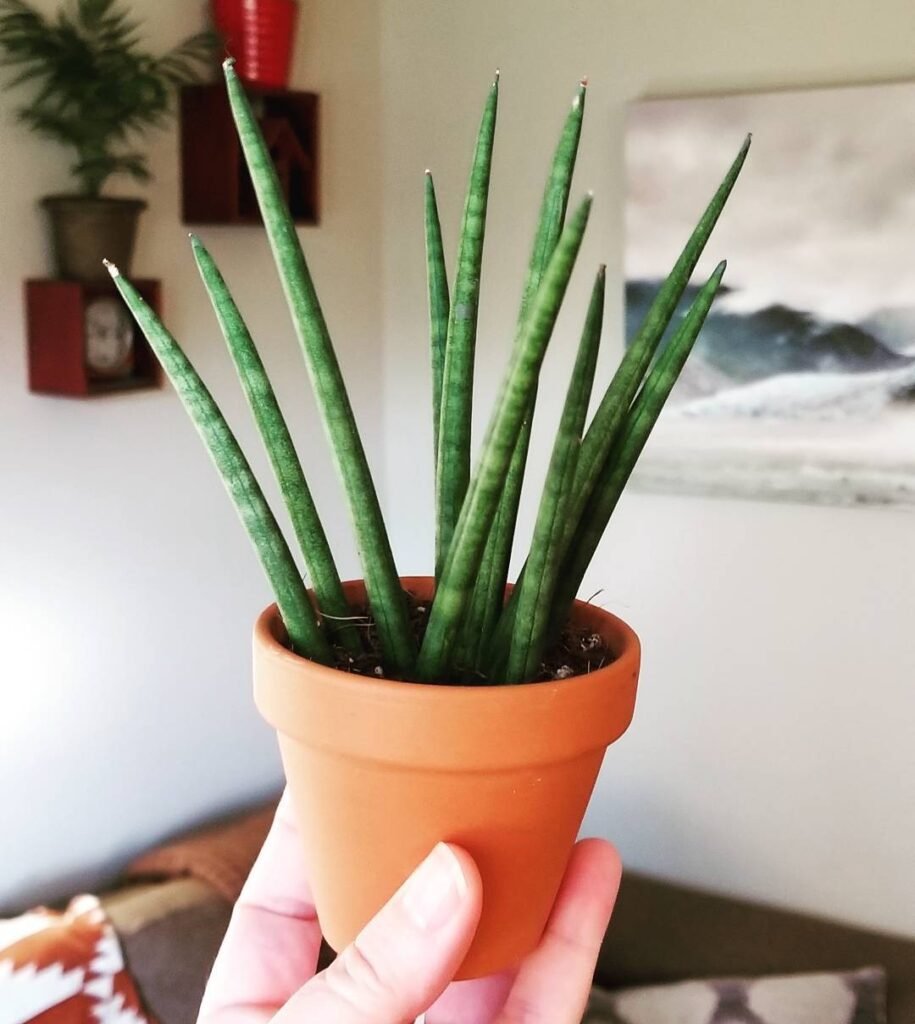
Propagating Sansevieria cylindrica, also known as Cylindrical Snake Plant, is a rewarding way to expand your plant collection or share this unique variety with others. By following a few simple steps, you can successfully propagate new plants from the parent plant.
Step 1: Identify and Prepare the “Pups”
- Look for smaller leaves, referred to as “pups,” growing near the base of the parent plant.
- Gently remove the pup from the root system, taking care not to damage the roots or leaves.
Step 2: Provide Well-Draining Soil
- Choose a separate pot with well-draining soil to house the new plant.
- Ensure the pot has drainage holes to prevent water accumulation.
Step 3: Plant and Nurture
- Place the separated pup in the new pot, covering the roots with soil.
- Find a warm and bright area for the new plant, away from direct sunlight.
- Water the newly potted pup sparingly, allowing the soil to dry out between waterings.
- Monitor the plant’s growth and provide proper care, including regular watering and adequate light.
With time and care, the pup will establish its roots and develop into a mature Sansevieria cylindrica plant. Enjoy the satisfaction of watching the new plant thrive and continue to contribute to the beauty of your indoor space.

Repotting Tips for Sansevieria cylindrica
When caring for your Sansevieria cylindrica plant, it’s essential to know when and how to repot it. Repotting should be done when the plant has outgrown its current pot, usually every two to three years. Here are some helpful tips to ensure a successful repotting process:
- Choose a slightly larger pot with good drainage: Select a pot that is one size larger than the current one to provide enough space for the plant’s roots to grow. Ensure that the pot has drainage holes to prevent water accumulation.
- Use well-draining soil: Fill the new pot with well-draining soil to promote healthy root growth. A mix of potting soil, perlite, and sand is a suitable option.
- Carefully remove the plant from its old pot: Gently turn the plant sideways and tap the bottom of the pot to loosen it. Grasp the base of the plant and carefully slide it out of the pot, supporting the root ball with your other hand. Be cautious not to damage the roots.
- Loosen the roots: Carefully untangle the roots and gently loosen the root ball by lightly teasing it with your fingers. This will help the roots establish themselves in the new pot.
- Place the plant in the new pot: Position the plant in the center of the new pot, ensuring that it sits at the same level as it did in the previous pot. Add more soil around the roots, gently pressing it down to secure the plant in place.
- Avoid overwatering: After repotting, it’s crucial to avoid overwatering the plant. Allow the soil to dry out slightly before watering, as overwatering can lead to root rot.
 Did you know Sansevieria cylindrica, or the Cylindrical Snake Plant, has a unique geometric shape that’s not just for show? This structure allows it to efficiently store water, making it a champion of drought resistance.
Did you know Sansevieria cylindrica, or the Cylindrical Snake Plant, has a unique geometric shape that’s not just for show? This structure allows it to efficiently store water, making it a champion of drought resistance.
Sansevieria cylindrica in the UK
Sansevieria cylindrica, also known as Cylindrical Snake Plant, is a favoured choice among indoor plant enthusiasts in the UK. Its unique appearance, air-purifying capabilities, and low maintenance requirements make it a favourite for both beginners and experienced plant owners.
One of the reasons why Sansevieria cylindrica is so popular is its ability to tolerate a variety of light conditions. Whether you have a brightly lit room or a darker corner, this plant can thrive in various lighting situations, making it versatile for any indoor space.
Air Purifying Abilities
In addition to its aesthetic appeal, Sansevieria cylindrica is renowned for its air-purifying properties. It has the ability to filter airborne toxins, including benzene and formaldehyde, which are commonly found in indoor environments. By having this plant in your home or office, you can enhance the air quality and create a healthier environment for yourself and your loved ones.
Low Maintenance Requirements
If you’re new to plant care or have a busy lifestyle, Sansevieria cylindrica is the perfect choice for you. This plant is incredibly low maintenance and requires minimal attention. It doesn’t need frequent watering, making it resilient to neglect and suitable for those who may forget to water their plants regularly.
Another benefit of Sansevieria cylindrica’s low maintenance nature is its ability to thrive in different humidity levels. It can tolerate dry indoor air, which is often common in centrally heated or air-conditioned spaces. So, whether you live in a humid or dry climate, this plant will still flourish in your home.
Versatile and Stylish
Sansevieria cylindrica’s unique appearance adds a touch of elegance and sophistication to any interior setting. Its cylindrical, spear-like foliage with grey-green variegation creates a visually interesting and modern look. Whether you prefer a minimalist or eclectic style, this plant can complement various design aesthetics.
Furthermore, Sansevieria cylindrica’s tall and slender growth habit allows it to fit into narrow spaces, making it an excellent option for smaller rooms or apartments where space is limited.
Overall, Sansevieria cylindrica is a versatile and stylish indoor plant that offers many benefits. From its air-purifying properties to its low maintenance requirements, this plant is a perfect addition to any home or office space. Whether you’re a seasoned plant enthusiast or just starting your indoor plant journey, Sansevieria cylindrica is sure to delight you with its beauty and ease of care.
Helpful Videos about Sansevieria cylindrica (Cylindrical Snake Plant)
Dive into this collection of marvellous videos I discovered, dedicated to the care of Sansevieria cylindrica, also known as the Cylindrical Snake Plant. They’re overflowing with easy-to-follow advice to simplify the nurturing of your plant. Just the ticket for those ready to begin their gardening voyage!
- Sansevieria Cylindrica (African Spear) Plant Care Guide For Beginners
FAQ about Sansevieria cylindrica (Cylindrical Snake Plant)

Wondering about the top tips for caring for your Sansevieria cylindrica (Cylindrical Snake Plant)? You’ve hit the jackpot! I’ve gathered all the essential queries to help you nurture your plant with ease. From mastering the right watering schedule to addressing common concerns, rest assured, you’ve got this.
It loves bright, indirect light but will tolerate lower light conditions well. Avoid direct sunlight which can scorch its leaves.
Water sparingly. Allow the soil to completely dry out between waterings, typically every 2-3 weeks, depending on your home’s humidity.
Yes, use a well-draining potting mix. A cactus or succulent soil mix is ideal for ensuring good drainage.
In the UK, it’s best grown indoors due to its preference for warm temperatures. It can be placed outside in summer but should be brought in before temperatures drop.
Propagate by dividing the root ball or by leaf cuttings. Remember, leaf cuttings won’t maintain the cylindrical shape.
Yellowing leaves are often a sign of overwatering. Ensure the soil is fully dry before watering again.
Repot every 2-3 years or when it outgrows its pot. Spring or early summer is the best time for repotting.
Indoors, it can reach up to 2-3 feet in height, with its cylindrical leaves growing vertically.
It’s mildly toxic if ingested, so it’s best to keep it out of reach of curious pets.
Though resilient, watch out for spider mites and mealybugs. Wipe leaves with a damp cloth and use insecticidal soap if needed.
Absolutely! It enjoys the humidity and can tolerate low light, making it a perfect bathroom plant.
Flowering is rare indoors and not guaranteed, but maximizing its care—proper lighting, minimal water, and not overcrowding the pot—can help.
Besides Cylindrical Snake Plant, it’s also known as African Spear Plant due to its long, spear-like leaves.
It’s not necessary but applying a balanced, water-soluble fertilizer at half strength once in the spring can support growth.
It prefers temperatures between 15°C and 26°C, so typical indoor conditions in the UK are fine.
Dust the leaves with a soft, damp cloth to keep them looking shiny and healthy.
Yes, it adapts well to fluorescent or LED office lighting, making it an excellent choice for office environments.
Yes, but ensure they have similar light and water requirements. It pairs well with other succulents and cacti.
I trust this guide has unravelled the mysteries of nurturing your Sansevieria cylindrica, also known as the Cylindrical Snake Plant. Got more puzzles about plant care? Chuck them in the comments – I’m all ears and ready to assist. Keep in mind, we’re all green-fingered learners at heart, constantly unearthing new gems of wisdom as we grow with our leafy friends.

